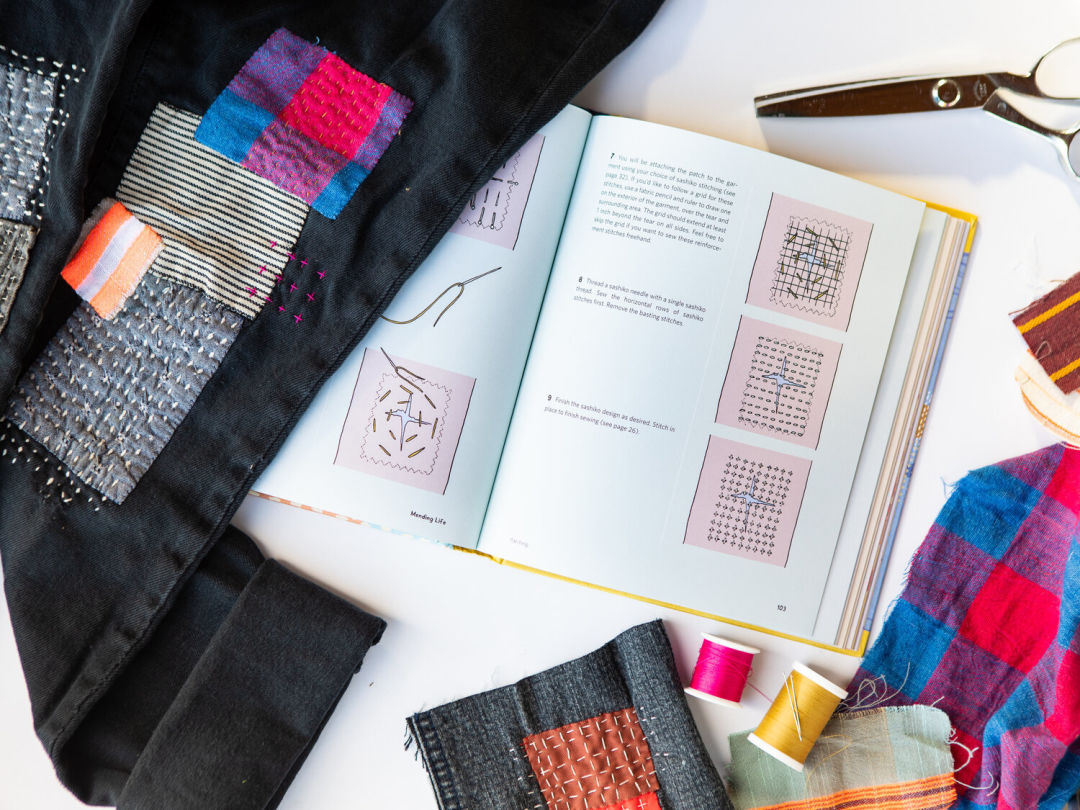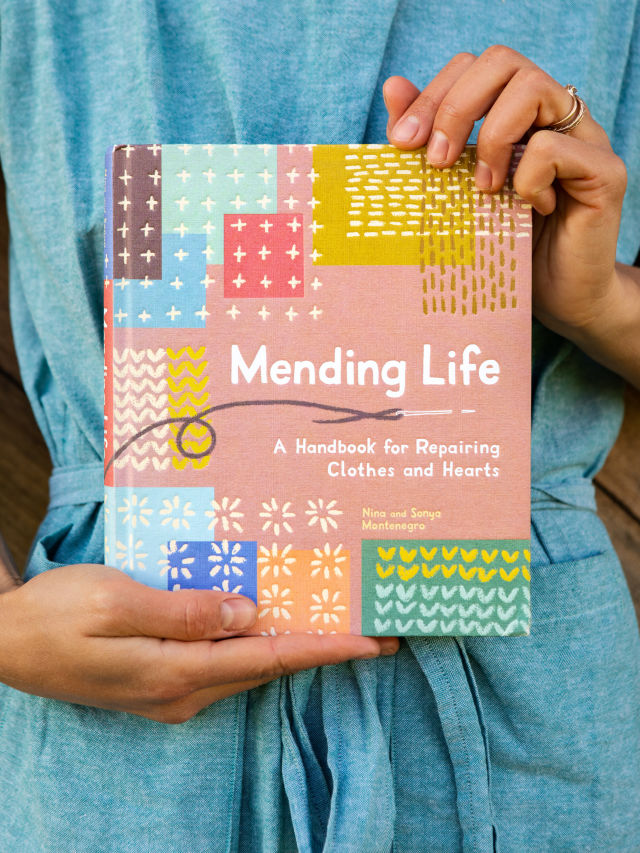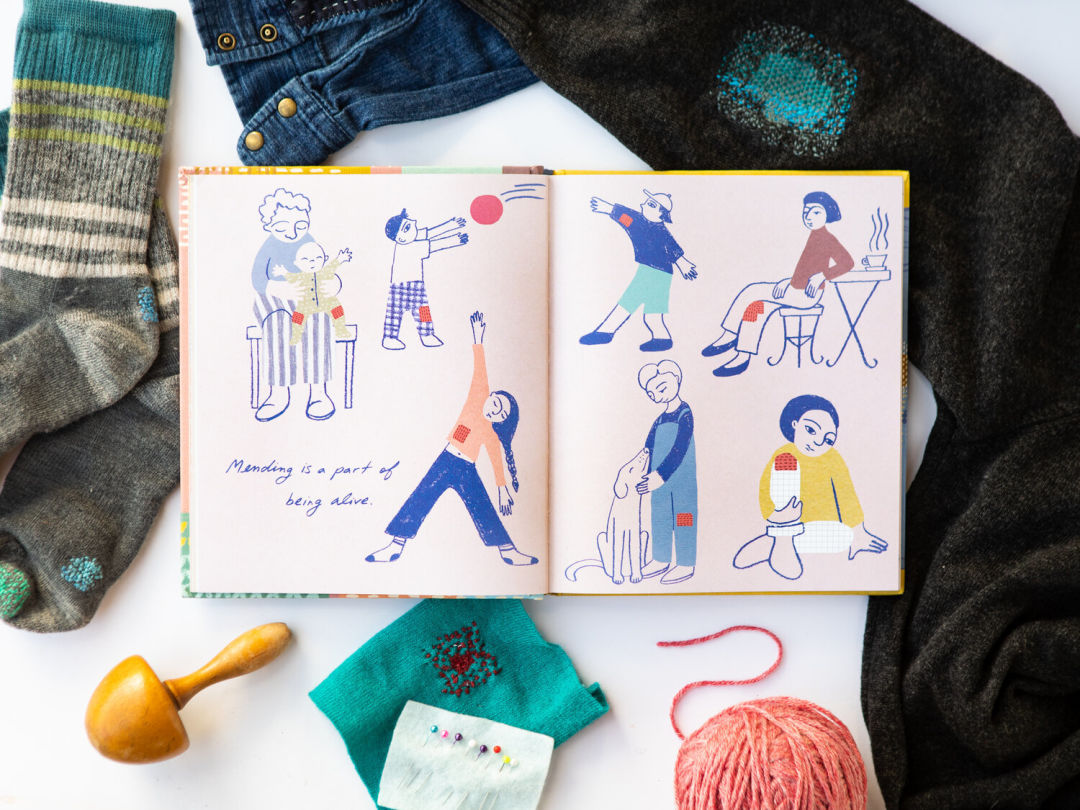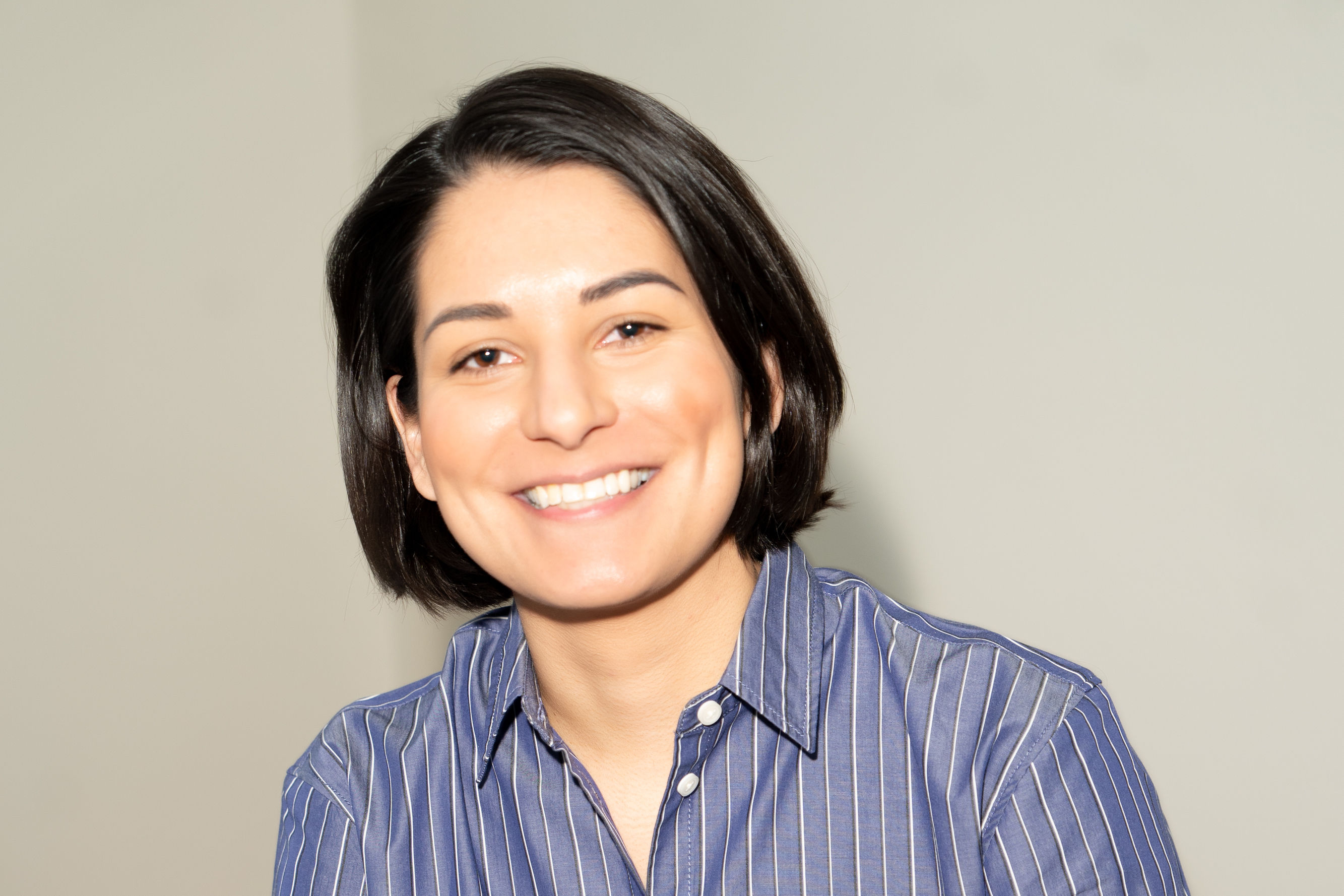The Montenegro Sisters Want You to Fix Your Clothes Instead of Tossing Them

A spread from Mending Life along with examples of visible mending techniques in the book.
Image: Courtesy Nolan Calisch
The Montenegro sisters are busy. Nina and Sonya have a long list of titles behind their names as creators of the organic-farm based design studio, The Far Woods. They are illustrators, beekeepers, quilters, printmakers, and now, book authors. Their book Mending Life—an adorably illustrated guide to mending your clothing in a fabulous visible way—is available March 10 through Sasquatch Books, a division of Penguin Random House.
For those with a pile of beloved clothing with tiny tears or busted seams, the book offers a wide spectrum of ideas for the absolute novice to the experienced sewer. Pick it up and meet the authors at their Ace Hotel book launch on March 12, or at one of their mending workshops on April 4. Portland Monthly caught up with the two sisters in advance of the launch to talk needles, thread, and how repairing things feels good.
How did the book come together and how long was the process?
Nina: We first made a little ‘zine that was really DIY and I think it had about six or seven tutorials in it. We released it on our Etsy shop. It was very basic but received a really good response. People are really interested in learning. [Sasquatch] saw it and approached us. So it was three years ago that we had the idea and then two years ago we were pitching the book proposal and here we are two years later in the book finally coming out.

Image: Courtesy Nolan Calisch
What was the process of putting it together? How did you decide what to include?
Sonya: Just like a lot of the projects, it started huge and complicated with so many elements that we wanted to get in there. We really had a vision of it including a strong message of resilience and rebellion. And we really wanted that to be part of it, but as we kept working it sort of got morphed and changed. Our editor wanted to keep it practical and very easy for a beginning sewer to approach, open up, and engages with. And we love that because one of the things about mending is it's a great entry point for people into sewing and into the world of taking action and doing something.
Tell me a little bit about your history with mending.
Nina: We grew up very urban in Chicago and, and like a lot of folks, being aware of our grandparents mending and our great grandparents mending, but we didn't take an interest in it back then. So there was kind of a lapse of a couple of generations where it wasn't being practiced in our family. And then we had a little taste of it when we started educating ourselves on kind of the horrors of fast fashion and wondering what we could do to kind of remove ourselves from that cycle. So we started learning to mend and learning the techniques and got really excited about both how kind of empowering it was and also how beautiful it was as an art form—a kind of marriage of activism and art.
And so does that mean you are all self taught?
Sonya: We're totally self-taught. We looked at tutorials online and we, you know, we gleaned a lot from other menders but we are self-taught and so we believe that anybody can do this. It's a very accessible thing for anyone. There's a lot of mending information out there and it's one of those things where there's a lot of good ways to do the same things. And so it's this really beautiful kind of flexible room for creativity and room for experiment.
I love that. I’m a lifelong sewer, but am still surprised by people too intimidated to try it.
Nina: I think we’re in a culture where you feel like you'd have to get a degree to do these things and to do a lot of the advanced work that you're doing. But you don’t. Everybody should know how to do them because everybody wears clothes. It’s just taking care of our things and we believe it's one of the signs of a resilient culture being able to care for the things that you use every day and knowing how to maintain them.
This seems like a natural extension of all the other creative endeavors you do because visible mending is such an art form.
Sonya: Yeah. It feels really natural and really good for us to have multiple ways of making things. We spend a lot of time on the computer, we spend a lot of time drawing and doing kind of work in that realm. And then to balance that with handwork and kind of slowing down and doing more tactile things feel really, really good. In the book we talk a lot about that as well as like, it has these bigger world implications. But it also has this very personal effect that it's really soothing and it's really like meditative.
If somebody is intimidated by mending, and they get your book, what would you recommend for them?
Nina: Number one in our book there's the real basics for sewing like how to thread a needle. But we like to teach darning and particularly darning socks as an entry point into mending because it really creates this aha moment for people. Quite a few people know how to throw on, you know, an iron on patch or sew on a patch. But darning is something that's actually so simple and people are so proud once they finished fixing their socks that we like that as a starter project. And everybody has a pair of wool socks that they spent so much on and they don't want to throw them away. Then when you're able to put them back on? It's a beautiful moment that really hooks everybody.
Do you feel like there is a greater awareness for people around fast fashion and the harmful impacts that it's having on the world. Do you notice that coming up with people just being a little bit more aware that this is a small thing they can do to help that waste level?
Sonya: There's kind of almost an inherent gut feeling that something about [fast fashion] is not right. I think folks are also just looking at the bigger, bigger, bigger picture and a lot of people are walking around with a lot of despair and grief watching the destruction that humans are causing and feeling lost and helpless. Mending seems so small, like such a small act, but it actually is a very hopeful moment and a hopeful skill that brings a realization that humans are also repairers. They're agents of healing. We have this capacity to destroy but also to repair.
Mending Life Launch Party
4—6 p.m. Thursday, March 12, Ace Hotel, Free with RSVP

Illustrations from Mending Life.
Image: Courtesy Nolan Calisch




